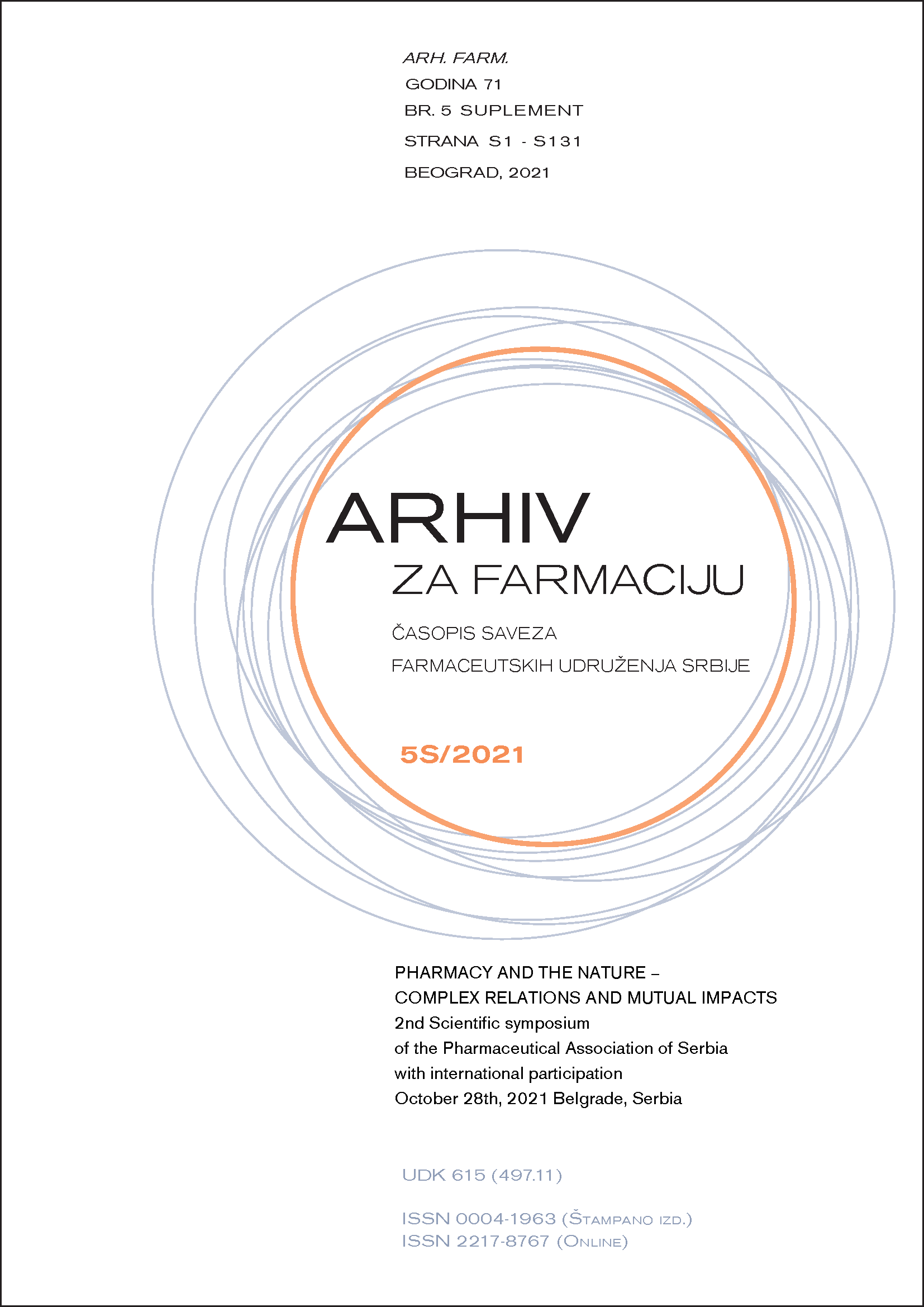CONTENT OF HEAVY METALS AND METALOIDS IN SAMPLES OF WILD GROWING MUSHROOMS GANODERMA LUCIDUM AND GANODERMA APPLANATUM
Abstract
For centuries, mushrooms have been used in East Asian countries to improve health and longevity, and then their use spread around the world. Medicinal species of mushrooms are edible or inedible species that show a therapeutic effect on human health. Due to their diverse composition, they have an important place in the food and pharmaceutical industry. They are an excellent source of raw materials for both functional foods and nutrients. The chemical composition of wild and cultivated species may differ due to the conditions in which they grow. Mushrooms from a mushroom farm don't develop defense mechanisms and do not synthesize secondary metabolites sufficiently because they do not need it to survive, but unlike wild species, which may contain a higher content of toxic elements, due to the contaminated soil on which they grow, they can be safer to consume. The content of toxic elements in wild mushrooms can be a major problem for human health, so the aim of this study was to determine the content of potentially toxic elements (PTEs) in mushrooms, Ganoderma lucidum and Ganoderma applanatum. They are wild, inedible, medicinal mushrooms that are often used for medicinal purposes due to their chemical composition. Owing to the varying quality of G. lucidum in the wild and the increasing demand for it in the food service, pharmaceutical, cosmetics, and health product industries, cultivation has become a major source of the mushroom (1). The measurements of elements (As, Cd, Hg, Pb, Cu, Fe and Cr) were carried out by inductively coupled plasma optical emission spectrometer (ICP-OES). The mean of As, Cd, Hg, Pb, Cu, Fe and Cr concentration in Ganoderma lucidum was 0.084±0.001, 1.6±0.1, 0.14±0.02, 2.8±0.1, 8.6±0.5, 64.8±4 and 0.26±0.02 mg/kg and in Ganoderma applanatum 0.22±0.02, 1.6±0.1, 0.22±0.03, 1.8±0,2, 33.7±2, 8.5±0,5, 0.3±0.03 mg/kg dry weight, respectively. Compared with the literature average values, for mentioned elements in wild mushroom species, the obtained values are within allowed limits (2). However, in cultivated species, the content of the mentioned elements is lower, except for Cu for species L. applanatum and Fe for both species (3). Therefore, it is extremely significant to study the safety of medicinal mushrooms.

